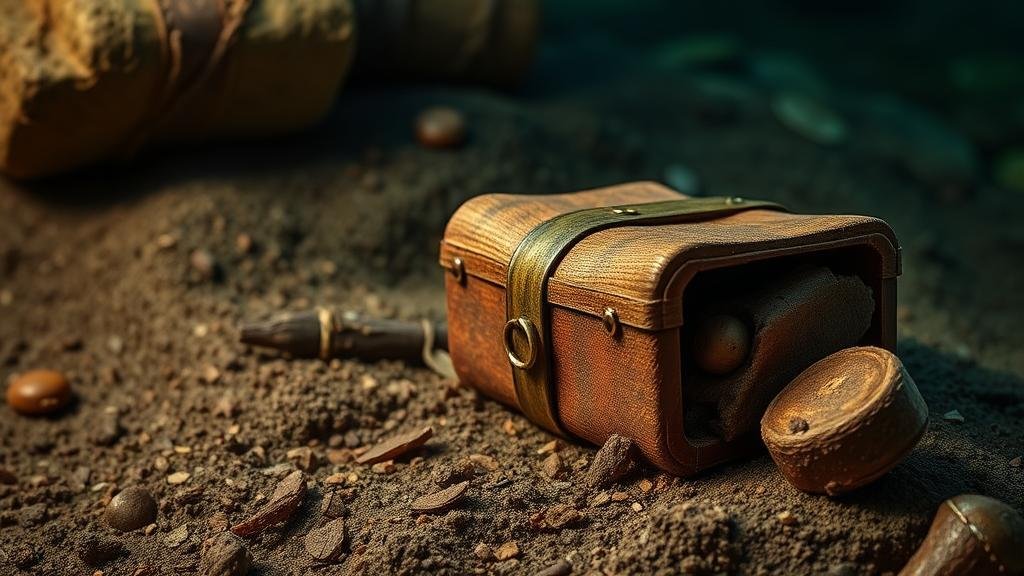The Discovery of the Antilles Pirate Cache: Old Diaries and Coastal Surveys Help Locate Buried Booty
The Discovery of the Antilles Pirate Cache: Old Diaries and Coastal Surveys Help Locate Buried Booty
The allure of pirate lore continues to captivate the public imagination, particularly when real-life accounts of buried treasure come to light. The recent discovery of the Antilles pirate cache provides a fascinating case study of how historical documents, such as old diaries, and modern coastal surveys combine to unearth hidden treasures interred during the notorious Golden Age of Piracy. This article delves into the methodologies and findings that have brought this legacy of seafaring bandits into the contemporary spotlight.
The Historical Context of Antilles Pirates
The Caribbean Sea, particularly the Antilles, served as a hub of pirate activity from the late 17th to early 18th centuries. Notable figures such as Blackbeard and Captain Kidd roamed these waters, leading to the accumulation of vast fortunes obtained through plunder. Many pirates, keen to evade capture by colonial authorities, buried their treasures in secret locations–often documented only in hastily scrawled diaries or maps.
For example, the seizure of the Spanish treasure fleet in the early 1700s resulted in a substantial amount of gold and silver being separated and hidden by pirate crews. The diaries penned by these marauders, combining cryptic language with references to geographical markers, have become invaluable resources for modern treasure hunters and historians alike.
Historical diaries have often been described as goldmines of information. offer personal insights into daily activities, capture the vagaries of life at sea, and provide clues for locating hidden caches. A remarkable example is the diary of pirate William Dampier, renowned for his explorations in the Caribbean and the South Sea. His notes highlighted specific islands and coastal features that serve as vital reference points in the search for buried booty.
- Analysis of language used in diaries can yield clues about the pirates intentions and methodologies.
- Descriptions of landmarks are often cryptic, requiring significant interpretation and cross-referencing with modern maps.
Scholars often employ techniques such as geospatial analysis to correlate historical accounts with contemporary cartographic data. By integrating information from Dampiers writings with early coastal surveys conducted in the region, researchers have been able to create a comprehensive framework for identifying potential treasure sites.
Coastal Surveys: Modern Technology Meets Ancient Secrets
The advancements in technology, particularly in Geographic Information Systems (GIS) and underwater surveying, have revolutionized how historians and treasure hunters search for buried caches. Throughout the Antilles, modern coastal surveys have mapped previously uncharted underwater terrain and identified likely deposit sites for hiding treasures.
For example, sonar technology allows for detailed mapping of the seafloor, revealing shipwrecks and potential treasure caches that might then correlate with historical accounts. A successful survey off the coast of Hispaniola in recent years utilized multibeam sonar to identify anomalies in seabed structure, which were subsequently explored based on preliminary historical evidence.
Real-World Applications of Findings
The synergy between studying old diaries and conducting coastal surveys has yielded considerable successes. In a notable case, a team of marine archaeologists uncovered over 200 coins and artifacts from an anchor site linked to notorious pirate Edward Teach, known as Blackbeard. The combination of both old diary accounts that referenced specific locations and high-tech surveying techniques allowed researchers to pinpoint their search.
Such findings bolster the legitimacy of treasure hunting as a field of academic inquiry. The artifacts discovered not only represent remarkable personal wealth but also provide insights into trade routes, cultural exchange, and economic conditions of the time.
Addressing Concerns of Impact and Preservation
While the excitement surrounding treasure discovery is palpable, it does bring with it a set of ethical questions surrounding the preservation of historical sites. How do we balance the thrill of discovery with the need to protect artifacts and sites from potential plundering or degradation?
- Encouraging collaboration between treasure hunters and archaeologists can lead to better preservation strategies.
- Useing strict regulations on the excavation of sites can ensure that discoveries are treated with respect and care.
Many archaeologists advocate for a wider understanding that treasures are not merely monetary symbols but gateways to understanding historical narratives. So, fostering a respectful approach to discovery can help preserve the stories of the past for future generations.
Conclusion: The Legacy of the Antilles Pirate Cache
The intersection of historical documentation and modern technological advancements has unveiled remarkable treasures hidden in the Antilles. The discovery of the pirate cache serves as a compelling reminder of the regions rich history and the clever ways in which pirates shielded their fortunes. By continuing to explore these concealed legacies, we not only satisfy human curiosity but also enrich our understanding of cultural history and maritime legacy.
As technological methods advance, how we engage with and interpret these historical resources will likely evolve, promising exciting discoveries for the future while emphasizing the importance of preservation and respect for our past.



